What is the largest mass of in that can be suspended without moving blocks and ? The static coefficent of friction for all plane surface of contact is Mass of block is and block is . Neglect feriction in the pulleys.
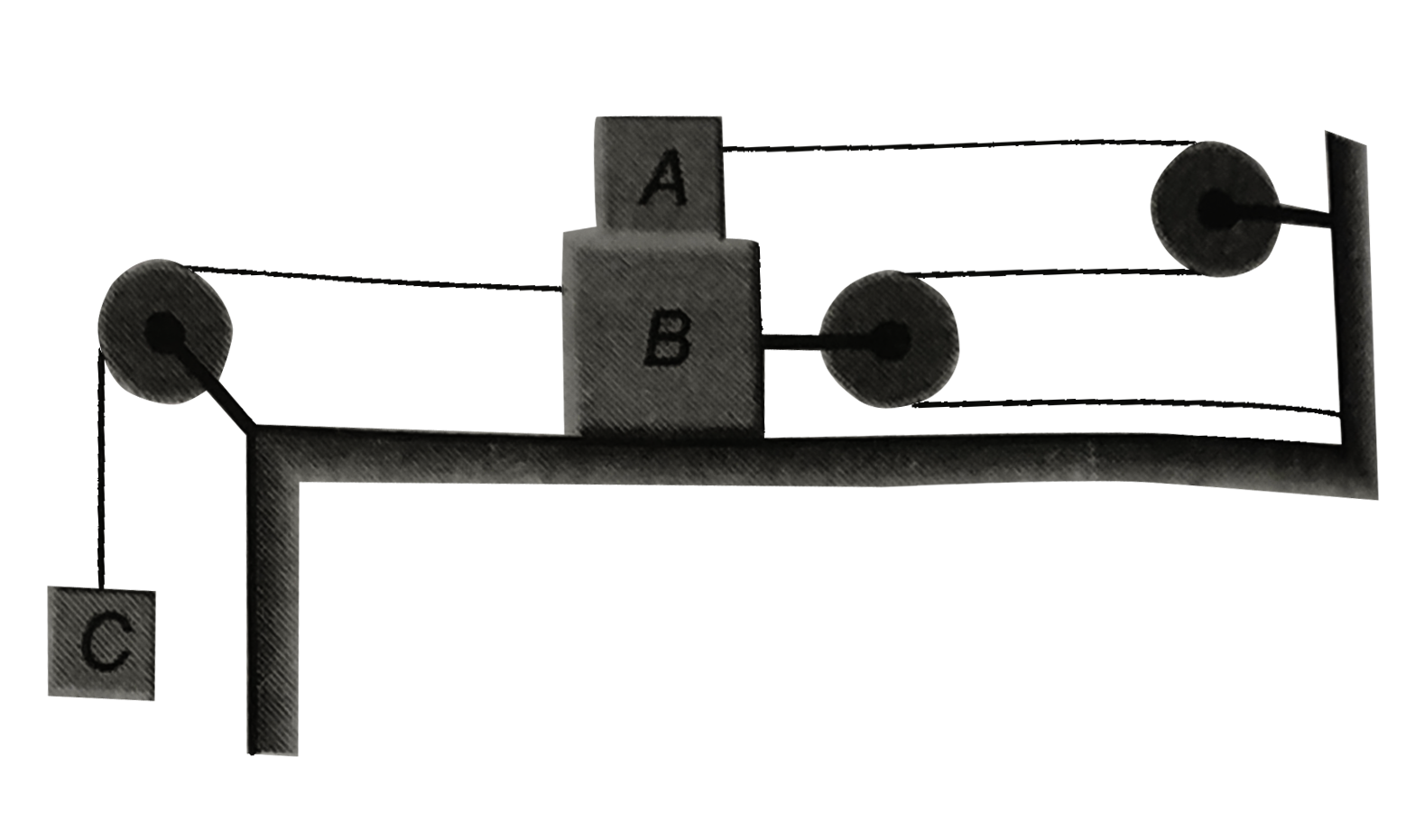
None of the above
The correct Answer is:C
Maximum value of friction between and
Maximum value of friction between and ground
force diagram is as shown below

Topper's Solved these Questions
- LAWS OF MOTIONBook:DC PANDEYChapter:LAWS OF MOTIONExercise:Objective Question
Explore 32 Videos
- LAWS OF MOTIONBook:DC PANDEYChapter:LAWS OF MOTIONExercise:Comprehension
Explore 9 Videos
- LAWS OF MOTIONBook:DC PANDEYChapter:LAWS OF MOTIONExercise:Exercise 8.5
Explore 2 Videos
- KINEMATICS 1Book:DC PANDEYChapter:KINEMATICS 1Exercise:INTEGER_TYPE
Explore 15 Videos
- LAWS OF THERMODYNAMICSBook:DC PANDEYChapter:LAWS OF THERMODYNAMICSExercise:Level 2 Subjective
Explore 18 Videos
Similar Questions
If the mass of the block A = 10 kg and the coefficient of static and kinetic friction is 0.2, then the mass of block B to start the motion is
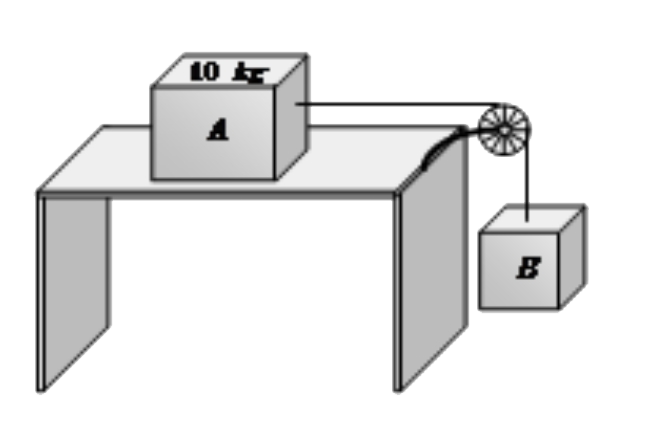
View SolutionBlock of mass 10 kg is moving on inclined plane with constant velocity 10 m/s. The coedfficient of kinetic friction between incline plane and block is :-

View Solution
Knowledge Check
Block A of weight 500N and block B of weight 700N are connected by rope pulley system as shown. The largest weight C that can be suspended without moving block A and B is W. The coefficient of friction for all plane surfaces of contact is 0.3. The pulleys are ideal. Find W90.
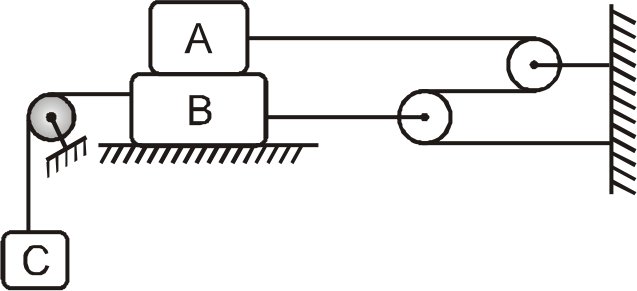 A12B22C9D18
A12B22C9D18Two blocks are connected over a massless pulley as shown in figure. The mass of block A is 10 kg and the coefficient of kinetic friction is 0.2 Block A sliders down the incline at constant speed. The mass of block B in kg is
 A5.4B3.3C4.2D6.8
A5.4B3.3C4.2D6.8What should be the value of F so that block of mass 1 kg remains in equilibrium. The co-efficient of friction between 1 kg and 4 kg block is 0.5 and except it all surfaces are smooth :-
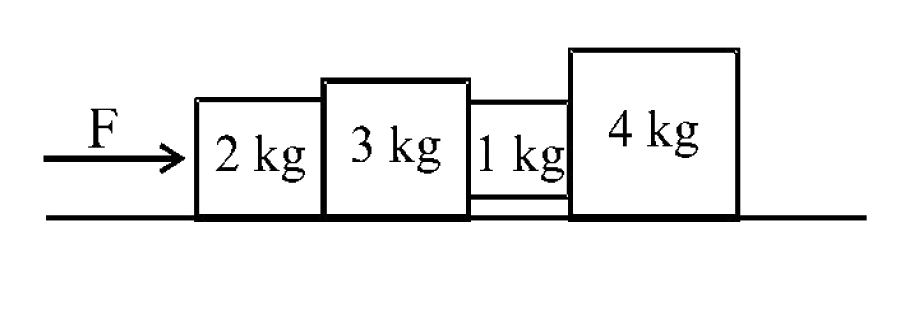 A220NB170NC135ND50N
A220NB170NC135ND50N
In the figure-2.201 shown the bigger block A has a mass of 40kg and the upper block 5 is of 8kg.The coefficients of friction between all surfaces,of contact are 0.2 (static) and 0.15 (sliding). Find the acceleration of masses when set free.
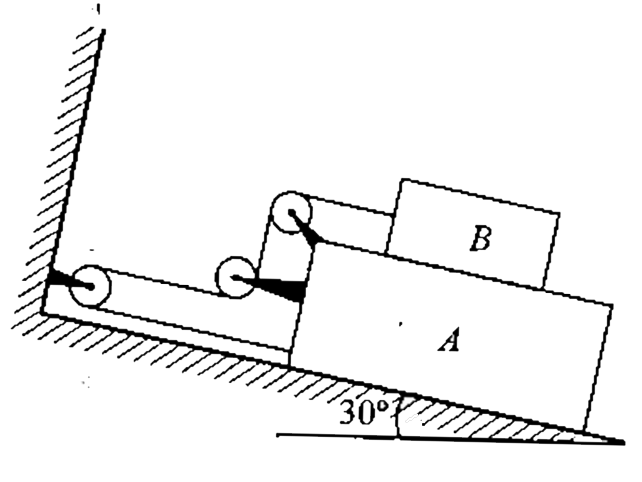
View SolutionTwo blocks are connected over massless pulley as shown in figure. The mass of block Ais 10 kg and the coefficient of kinetic friction is 0.2 .Block A sliders down the incline at constant speed. The mass of block B in kg is
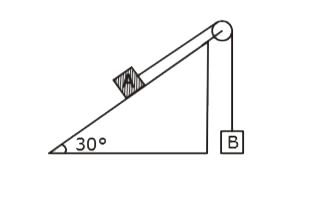
View SolutionThe block A in the given figure is of mass 10√3 kg The coefficient of friction between the block and the surface on which it rests is 0.5. Find maximum mass of block B possible such that the system will be in equilibrium is.
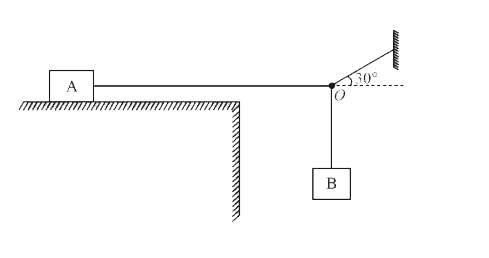
View SolutionCalculate the Force (F) required to cause the block of mass m1=20kg just to slide under the block of mass m2=10kg [ coefficient of friction μ=0⋅25 for all surfaces ]
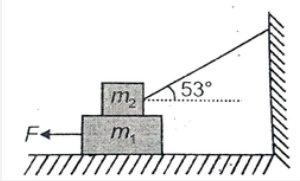
View SolutionBlock A has a mass of 30kg and block B a mass of 15kg . The coefficient of friction between all surface of contact are μs=0.15 and μs=0.10 Knowing that θ=30∘ and that the magnitude of the force F applied to block A is 250N Determine (a) acceleration of block A and (b) the tension in the rope

View Solution